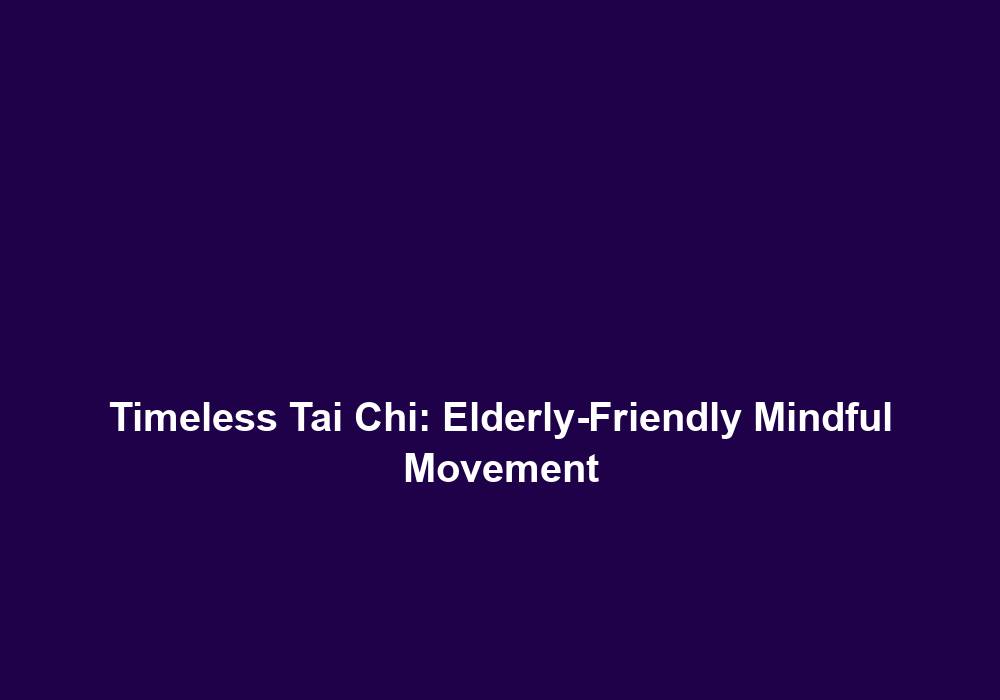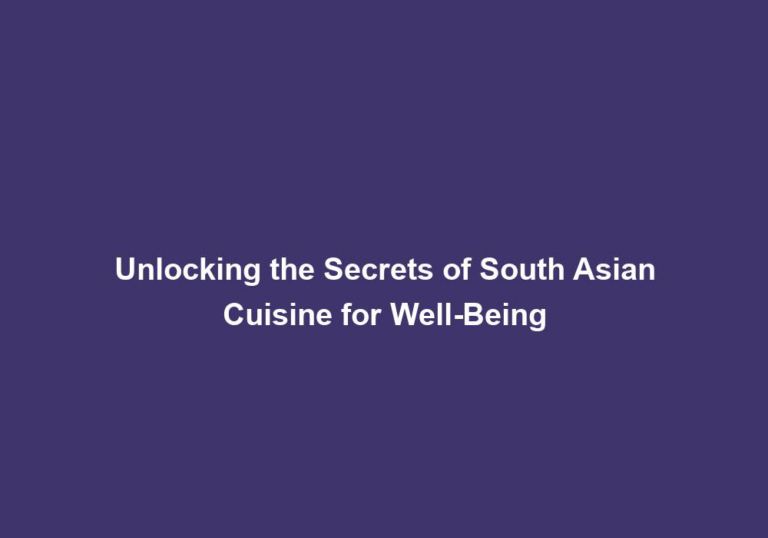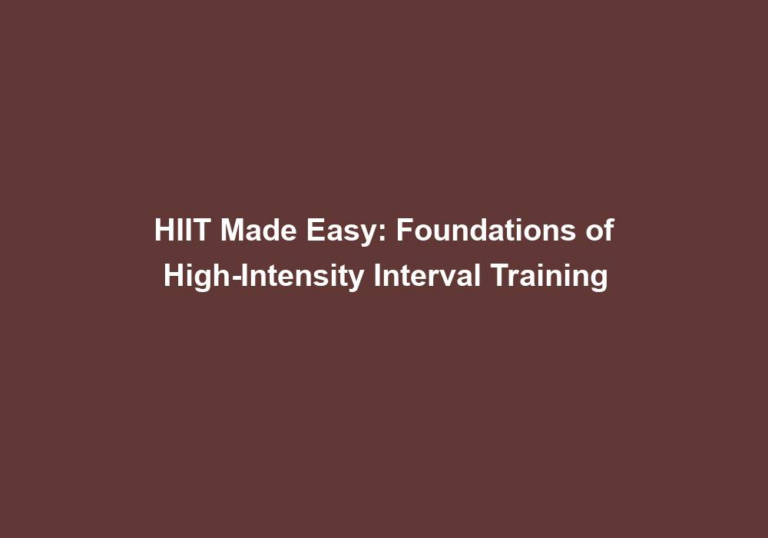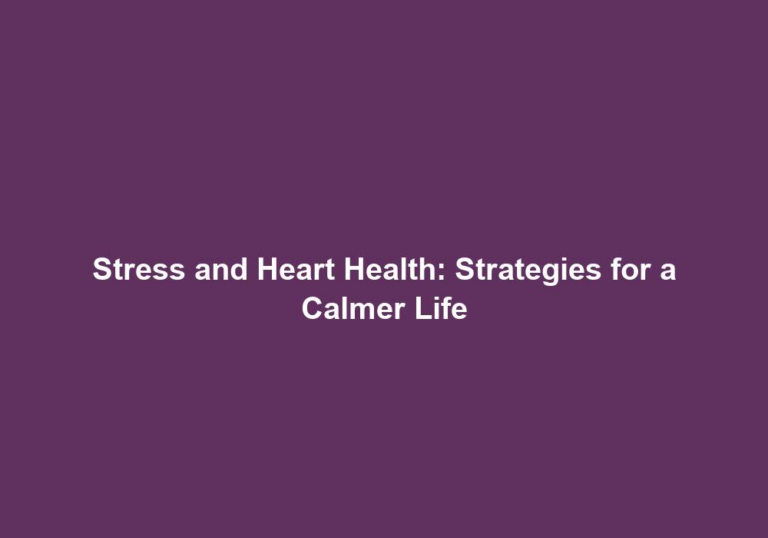Timeless Tai Chi: Elderly-Friendly Mindful Movement
Tai Chi, also known as Tai Chi Chuan, is a centuries-old Chinese martial art that has gained immense popularity worldwide. It combines gentle physical movements, deep breathing, and focused meditation to promote physical and mental well-being. Tai Chi is particularly beneficial for the elderly as it offers numerous health advantages while being gentle on the body.
The Essence of Tai Chi
At its core, Tai Chi is about achieving harmony and balance within oneself. It is often described as a moving meditation that cultivates mindfulness and self-awareness. The practice involves slow and graceful movements, flowing from one posture to another in a continuous sequence. Each movement flows into the next, promoting a sense of fluidity and relaxation.
Tai Chi is a holistic practice that encompasses physical, mental, and spiritual elements. By practicing Tai Chi, individuals develop a deep connection between their body and mind. The slow and deliberate movements encourage individuals to be fully present in the moment, promoting mindfulness and self-awareness.
Health Benefits of Tai Chi for the Elderly
-
Improved Balance and Fall Prevention: Balance is a crucial aspect of maintaining independence and mobility in older adults. Regular practice of Tai Chi has been proven to enhance balance control, reducing the risk of falls and related injuries. The slow and controlled movements in Tai Chi help improve proprioception, which is the body’s ability to sense its position in space. This, in turn, improves stability and reduces the likelihood of falls.
-
Increased Strength and Flexibility: Tai Chi involves gentle weight shifting and stretching movements that target various muscle groups. Over time, these exercises can help strengthen muscles, improve flexibility, and enhance overall physical fitness. The continuous flowing movements in Tai Chi promote muscle endurance, which is essential for daily activities and maintaining independence.
-
Better Cardiovascular Health: Tai Chi is a low-impact aerobic exercise that gently elevates the heart rate. The continuous flowing movements stimulate blood circulation, leading to improved cardiovascular health and a reduced risk of heart disease. Regular practice of Tai Chi can help lower blood pressure, improve cholesterol levels, and enhance overall heart health.
-
Enhanced Joint Health: The gentle, controlled movements of Tai Chi promote joint mobility and flexibility. This can be especially beneficial for older adults dealing with arthritis or other joint-related issues. Tai Chi exercises gently lubricate the joints, improving their range of motion and reducing stiffness. The slow and fluid movements also help alleviate pain and discomfort associated with joint conditions.
-
Stress Reduction and Mental Well-being: Tai Chi incorporates deep breathing and meditation, which help calm the mind, reduce stress, and promote mental clarity. The practice can be particularly helpful for managing anxiety, depression, and improving overall mental well-being. By focusing on the present moment and cultivating mindfulness, Tai Chi allows individuals to let go of worries and find inner peace.
In addition to the above benefits, Tai Chi has also been shown to improve sleep quality, boost immune function, and enhance cognitive function in the elderly. Its holistic nature makes it a suitable exercise for individuals of all fitness levels and can be adapted to accommodate specific needs and limitations.
Getting Started with Tai Chi
If you or someone you know is interested in starting Tai Chi, here are a few tips to ensure a smooth and enjoyable experience:
-
Find a Qualified Instructor: Look for an experienced Tai Chi instructor who specializes in teaching elderly individuals. They can guide you through the proper techniques, ensuring safety and maximum benefit. A qualified instructor can also provide modifications for individuals with specific health concerns or physical limitations.
-
Start Slowly: Tai Chi is a gradual practice that requires patience and consistency. Begin with shorter sessions and gradually increase the duration as your body adapts to the movements. It is important to listen to your body and not overexert yourself. Tai Chi is meant to be a gentle and flowing practice, so take your time to master each movement before progressing to more complex sequences.
-
Wear Comfortable Clothing: Choose loose-fitting, breathable clothes that allow for unrestricted movement. Comfortable footwear with good support is also essential. Avoid wearing restrictive or tight clothing that may hinder your range of motion.
-
Practice Regularly: To reap the full benefits of Tai Chi, it’s important to practice regularly, ideally several times a week. Consistency is key to progress and improvement. Set aside dedicated time for your Tai Chi practice and make it a part of your routine. Consider joining a Tai Chi class or forming a group with like-minded individuals to stay motivated and accountable.
-
Listen to Your Body: Pay attention to your body’s limitations and adjust the movements accordingly. Tai Chi should be gentle and pain-free. If you experience any discomfort, consult with your instructor or a healthcare professional. It is important to communicate any concerns or issues you may have to ensure a safe and effective practice.
Tai Chi Forms and Styles
Tai Chi consists of various forms or styles, each characterized by different movement sequences and philosophies. Some popular styles include:
-
Yang Style: This is the most widely practiced style, known for its slow, flowing movements and large frame postures. It is suitable for beginners and emphasizes relaxation and balance. Yang Style Tai Chi is often recommended for older adults due to its gentle nature and focus on cultivating internal energy.
-
Chen Style: Chen Style incorporates both slow, graceful movements and explosive bursts of power. It combines intricate footwork, silk-reeling movements, and fast-paced techniques. Chen Style Tai Chi is suitable for individuals looking for a balance between fluidity and martial arts applications.
-
Wu Style: Wu Style focuses on smaller, compact movements and emphasizes internal energy cultivation. It is often preferred by older individuals or those with limited mobility. Wu Style Tai Chi is characterized by its gentle and smooth movements, making it accessible to individuals of all ages and fitness levels.
-
Sun Style: Sun Style combines elements of Tai Chi, Xingyi, and Bagua. It incorporates agile footwork, unique stepping patterns, and is known for its smooth and flowing motions. Sun Style Tai Chi is suitable for those looking for a more dynamic and energetic practice.
It’s important to note that regardless of the style of Tai Chi you choose, the underlying principles and benefits remain consistent. The choice of style may depend on personal preference, physical capabilities, and individual goals.
Precautions and Safety Considerations
While Tai Chi is generally safe for people of all ages and fitness levels, it’s important to keep the following precautions in mind:
-
Consult with a Healthcare Professional: If you have any underlying health conditions or concerns, it’s advisable to consult with your healthcare provider before starting Tai Chi. They can provide personalized recommendations and ensure that Tai Chi is safe and appropriate for your specific needs.
-
Warm-up and Cool-down: Prior to each Tai Chi session, perform gentle warm-up exercises to prepare your body for movement. Similarly, end each session with a cool-down routine to relax and stretch your muscles. Warm-up exercises can include gentle stretches, joint rotations, and light aerobic activities to increase blood flow and flexibility.
-
Avoid Overexertion: Tai Chi should be practiced at a comfortable pace. Avoid pushing yourself too hard or performing movements that cause pain or discomfort. It’s important to listen to your body and take breaks when needed. Tai Chi is meant to be a gentle and mindful practice, so honor your body’s limits.
-
Modify Movements as Needed: If you have specific physical limitations or injuries, work with your instructor to modify certain movements to suit your needs. Tai Chi can be adapted to accommodate various fitness levels and conditions. Your instructor can provide alternative movements or adjustments to ensure a safe and effective practice.
Conclusion
Tai Chi is a timeless practice that offers numerous benefits for the elderly. Its gentle movements, combined with mindful breathing and meditation, make it a suitable exercise for individuals of all fitness levels. From improved balance and strength to reduced stress and enhanced mental well-being, Tai Chi can greatly contribute to a healthy and fulfilling lifestyle. So why not embark on this mindful journey and experience the wonders of Tai Chi for yourself?







